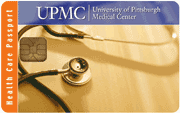Trusted NFC tags expand authentication applications
Mark Robinton, technology innovation manager, HID Global
The Near Field Communications market (NFC) is poised to explode over the next five years, with the share of NFC-enabled smart phones in the U.S. expected to reach 53% by 2015. This rapid growth is driving a shift from mobile payments to adventurous, interactive marketing and authentication services.
If NFC is included in a device, using it can be simple, requiring no modification to devices or downloading apps. Embedding tags enables consumers to interact with nearly any item or document in new ways. These “Internet of Things” applications include tapping a smart poster for an interactive brand experience, authenticating the value of a luxury item or verifying the presence of a health care provider.
Companies are discovering the unique benefits in applications such as Electronic Visitor Verification systems and Digital Out-of-Home media campaigns. It is a frictionless experience for users because authenticity is verified simply by holding a smart phone or tablet close to the tag. This ease-of-use makes it ideal for everything from retail loyalty cards and sweepstakes promotions, to tracking home health visits and patient access, to educational materials.
The Promise of Security
Rapid advancements in NFC security have helped to eliminate the potential for fraud and abuse in NFC-enabled services. With traditional QR codes or static NFC tags, there was no easy way to authenticate the identity and location of an individual or item, and tags were vulnerable to cloning and tampering.
This however, has changed thanks to next-generation “trusted tags.” These new tags include security and privacy attributes that change on every tap to provide a secure audit trail and make taps uncloneable. Trusted NFC authentication tags can incorporate an electronically signed and cryptographically secure digital certificate to prove authenticity.
Tags can be embedded in virtually any product, piece of equipment or common household item, and users can verify authenticity with an NFC-enabled smart phone or mobile device. This not only optimizes security and convenience, but also eliminates the need for special readers or other equipment for tag authentication and enables new use cases that require proof of presence.
The combination of trust and convenience opens the door to use of trusted tags in diverse markets and enables them to support a variety of Internet of Things applications. Already, the home health and Digital Out-of-Home markets are realizing significant benefits from trusted tags.
Proof of Presence in Health care
In 2011, Medicare reimbursements for home-based care totaled $18.4 billion and state Medicaid program reimbursements hit $12.7 billion for beneficiaries’ personal-care services. It’s the kind of money that has proved impossible for fraudulent players to resist, resulting in the fleecing of Medicare, Medicaid and private insurance companies for billions of dollars covering in-home services that were never provided.
To stem the tide of fraudulent claims, a number of states have passed legislation requiring home health care agencies to implement Electronic Visitor Verification to prove that a home health aide or nurse was physically present in the patient’s home for the required length of time. Proximity technologies like NFC or Bluetooth Low Energy satisfy these requirements by enabling highly secure Electronic Visitor Verification systems that are both easy to use and difficult to manipulate or defraud. Trusted tags are proving to be a viable alternative to the more traditional telephony-based and GPS-enabled systems for closing authentication gaps.
Tamper-proof tags are attached to or embedded into an object inside the patient’s home in such a way that they cannot surreptitiously be removed or altered. When the caregiver arrives, they simply “tap” the object with their BLE- or NFC-enabled device to communicate secure information to a cloud-based authentication platform. Tag data has security and privacy attributes that change on every tap, thereby providing an indisputable and auditable Electronic Visitor Verification record for home health agencies to use for billing and reimbursement.
Top NFC tag solutions also integrate seamlessly into most agencies’ clinical and administrative management software systems. This enables data collected at the point of care to be transmitted back to the agency in real-time for improved care coordination, faster and more accurate claims processing and advanced analytics.
Creating Consumer Connections
In the Digital Out-of-Home market, trusted tags eliminate abuse with retail loyalty programs, gaming and sweepstakes campaigns connected to marketing displays. By requiring consumers to interact with an authentic tag to generate an entry into a program, fraudulent entries are minimized. This is illustrated by the successful “Film for All Friday” campaign conducted on behalf of the 2014 Tribeca Film Festival by Tamoco, a global provider of mobile marketing technology and analytics.
Tamoco embedded trusted tags into promotional posters on display at participating retail outlets. Fans who visited these locations over a four-day period received free tickets simply by tapping the posters with an NFC-enabled smart phone or tablet. Over the course of the promotion, film fans tapped promotional posters a total of 8,195 times.
The security attributes of trusted tags enabled Tamoco to verify proof of presence, and delivered an interaction that was both secure and effortless for participants, creating an unbreakable connection between the festival and film-loving consumers.
A Frictionless Experience
By enabling smart phones and other mobile BLE- and NFC-enabled devices to effortlessly double as tag readers and communicate with authentication services, companies that were previously stuck on the Internet of Things sidelines have a vast array of opportunities before them. Trusted tags in particular enable secure transactions and instill confidence that individuals scanning the tags are both who and where they claim to be.
For applications like Electronic Visitor Validation and Digital Out-of-Home, access to BLE- and NFC-enabled devices and a growing acceptance of mobile interactions are coming together to drive innovation, reduce fraud and build consumer relationships in a way not previously possible.




